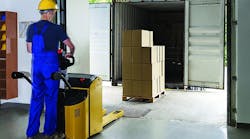While work-related musculoskeletal disorders (WMSD) can be overlooked, claims related to overexertion and repetitive motion injuries serious enough to result in time off work or disability benefits accounted for 21% of total state-funded claims from 2009-2013, according to Ninica Howard, an occupational health and safety researcher with the SHARP research group.
That’s a little more than one in every five claims during a five-year period, which should be more than enough to catch your attention.
Let’s look at those claims in a little more detail:
- Injuries to the back, neck and shoulders account for about 2/3 of manual material handling claims.
- The most commonly cited cause of injury was handling a container (25%).
- Among WMSD claims where the injury type was specified,
–55% were attributed to lifting,
–17% were attributed to holding, carrying, turning and wielding,
– 14% were attributed to pushing and pulling
“Lifting is by far the biggest issue when it comes to WMSDs or ‘sprains and strains’ in the workplace. There are two lifting problem areas. Heavy lifting is the obvious risk. And awkward lifts – bending over, reaching out or reaching up to lift objects – are the second biggest problem, even if this is less obvious,” said Rick Goggins, an ergonomist with Washington State Department of Labor and Industries (DOSH).
More on how to prevent WMSD injuries on EHS Today.
EHS Today is an companion site to MH&L and part of Penton’s Manufacturing & Supply Chain Group.



